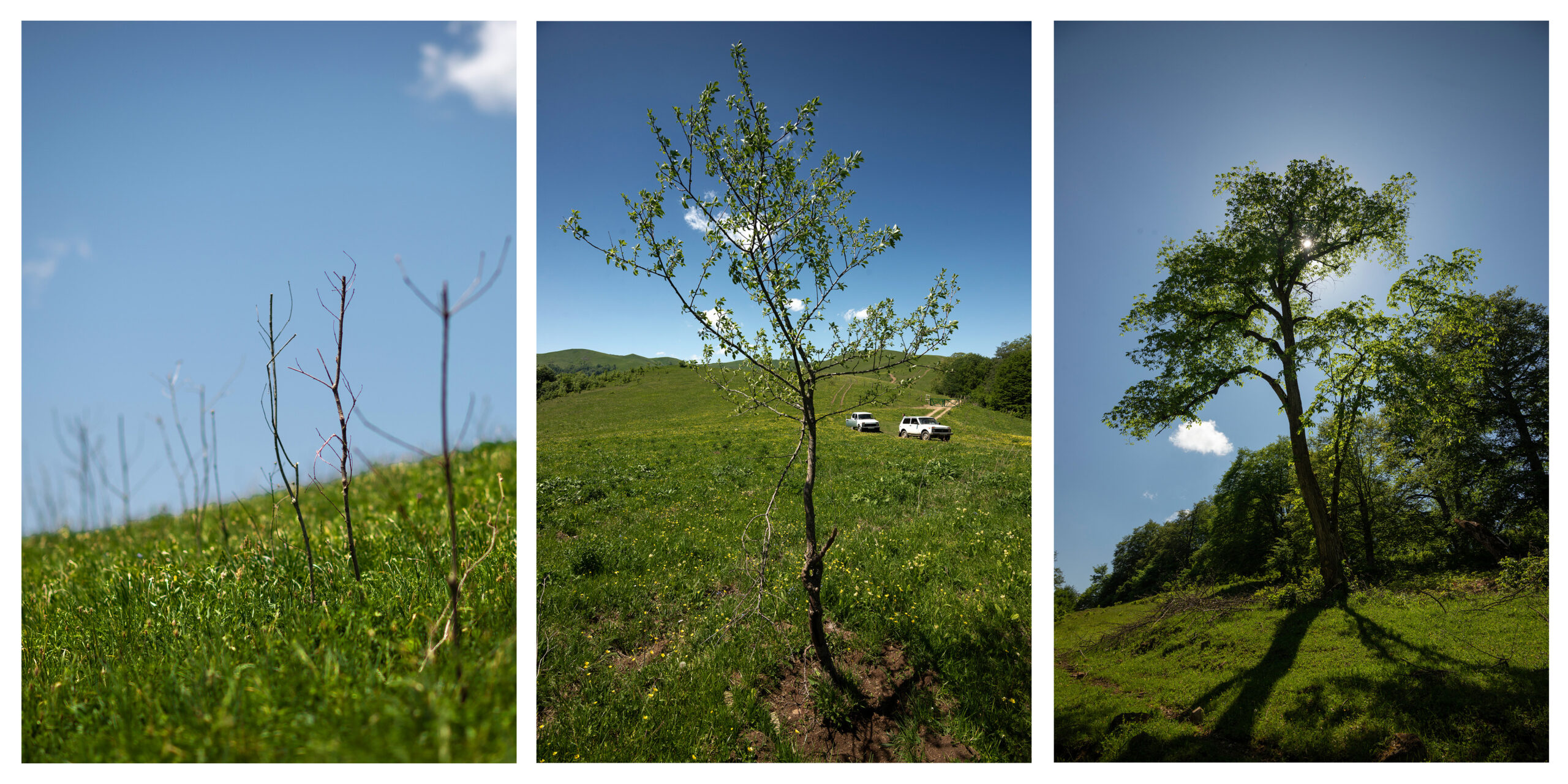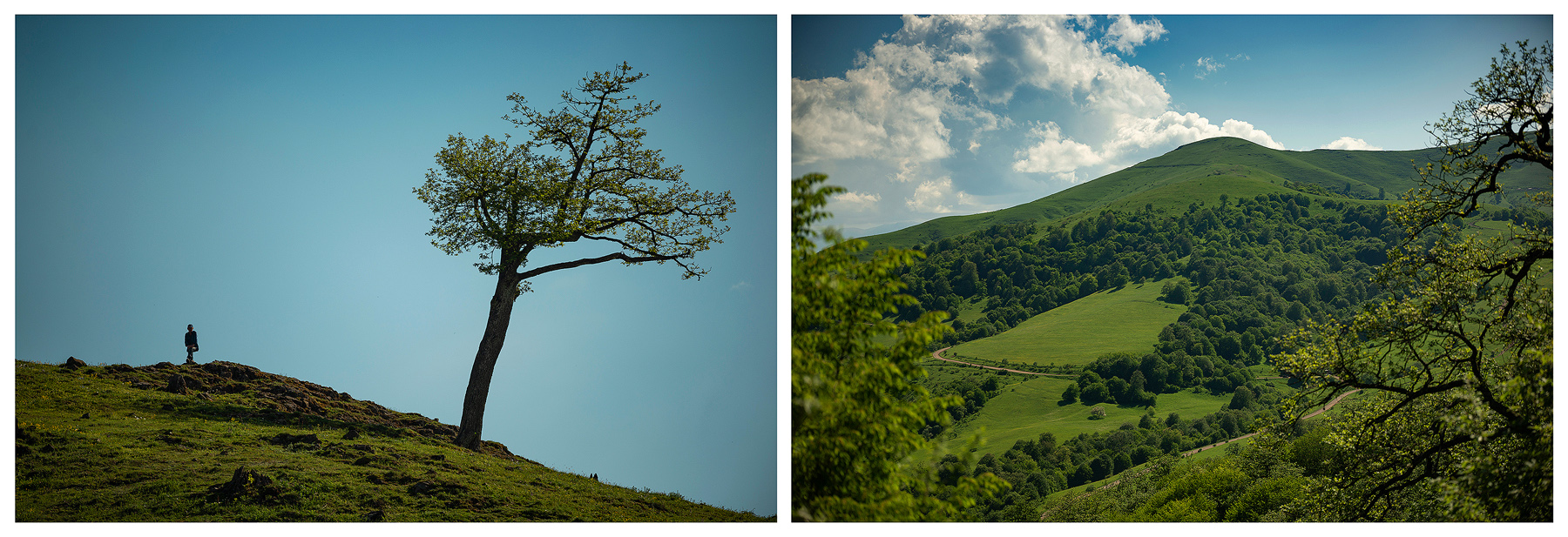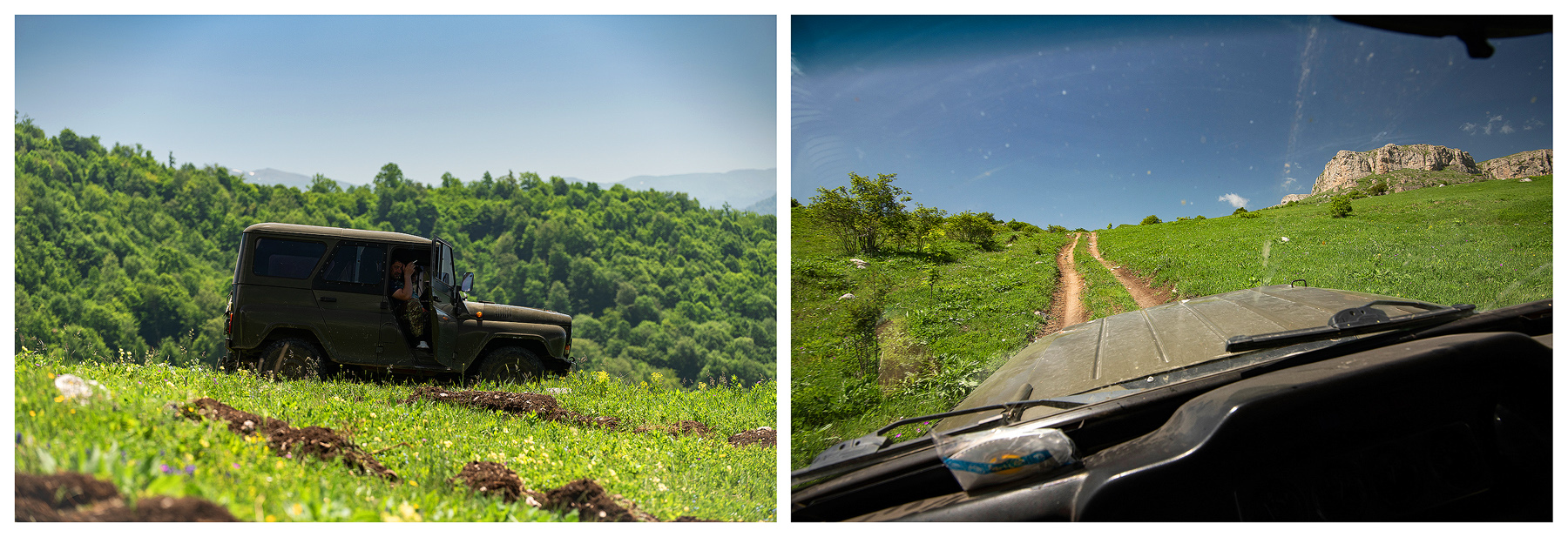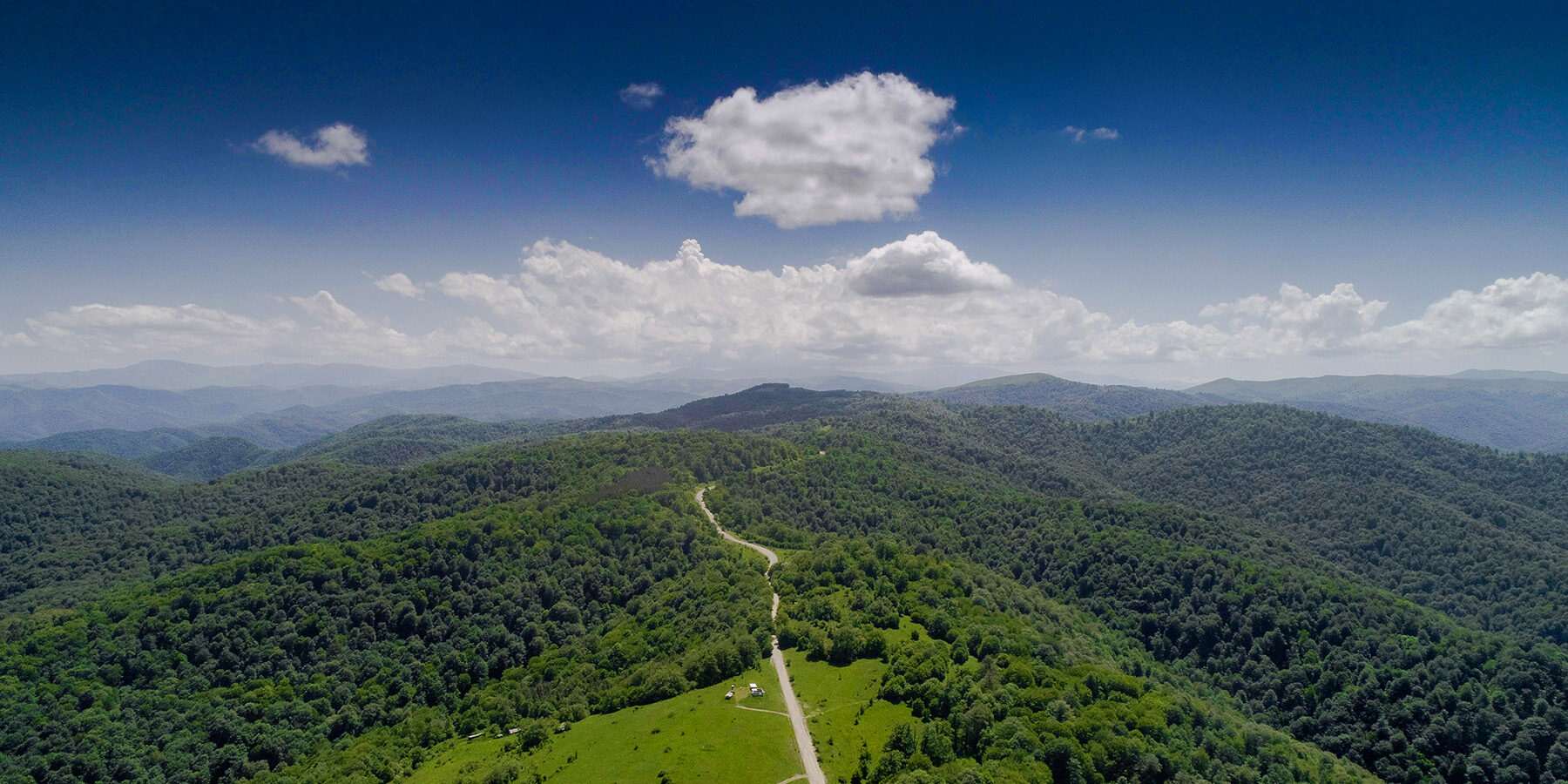Trees Are Just Like Humans: they Require Love and Care-the EU Promotes Community-based Forest Management and Restoration
ARMENIA. 5 June 2020-Almost thirty-thousand-hectare wood lies in a two-thousand-meter high area of what is known as the “Noyemberyan forestry enterprise”, the branch of HayAntar (ArmForest) in Armenia’s Tavush region. Oak trees, ashes, horn beams, beech, wild pear and apple trees–green legacy that has been carefully kept intact for decades.
“Forests are a valuable asset to humankind”, says Volodya Gharagyozyan (known as Moso), senior forester. “Trees are just like humans։ they require love and care”. He has been working in the forestry for 40 years, which makes him the eldest and most experienced forester in the area. He knows every tree in the forest and has given life to many, like this young oak which grows inside a dead tree.

On the left, Moso, the senior forester with a young oak he planted inside a dead tree. On the right, Moso in the forest.
Not only does Moso work hand in glove with 7 other foresters to teach them the peculiarities of this difficult job but he also leads forest restoration projects. In the last few years, community-based forest management has been promising to make the forest’s condition better. “Forest conservation and restoration also means direct jobs and socio-economic benefits for local communities”, Moso says.

Groups of people working at Noyemberyan forest nursery.
120 people from 10 neighboring rural communities have been tirelessly germinating seeds and planting small trees to help the environment. The idea entails expanding the area ofNoyemberyan forestry by planting 3,000 trees per hectare. Given that every tree requires 4-5 years of regular care until it becomes solid in soil, creating new green spaces means a lot of work showing results in the next ten years.

Tree life stages.
In fact, groups of people with simple tools, like shovel and hoes can plant 250 on average in a single day. In return, people are entitled to permanent job and access to forest products.

Tree life stages. In fact, groups of people with simple tools, like shovel and hoes can plant 250 on average in a single day. In return, people are entitled to permanent job and access to forest products. Forest workers with shovel and hoes heading to a new planting site.
“This work complements my monthly income”, says Svetlana Sahakyan, who joined the tree planting group three months ago. “I am happy with my job even though it is difficult to work under the burning sun and pouring rain”, says another worker, Arevhat Grigoryan. As to the question what she likes the most about her job, she proudly says, “It is my absolute pleasure to realize that I do good for nature and humankind”.

Arevhat (on the left) and her friend Anzhela (on the right) digging soil for new trees.
Fostering natural forest regeneration is another initiative Moso and his peers have been involved in for the previous two years. Its apparent success is about making the forest ecosystem stronger and more resilient by creating diggings under trees. This makes a sustainable environment for tree seeds to fall to the ground and grow naturally.

Diggings under trees – an example of natural forest regeneration.
To exclude livestock grazing near such sites and keep them away from these regenerants, forest workers erect fences to restrict and limit cattle movement.

On the left, a fence to keep livestock away from forest areas. On the right, cattle grazing.
Tree planting and restoring forests helps local communities to have sustainable jobs. Above all, as one of “EU4Climate” EU-UNDP programme components underlines, forest recovery and regeneration also contributes to climate change mitigation by reducing the greenhouse gas emissions resulting from other sectors. Human intervention and sustainable management may be key in maintaining of a functioning forest ecosystem. And it is important to understand that biodiversity preservation and climate crisis are correlated and having community-managed forests and protected areas has become a matter of survival. It has become a matter of sustainable life we all want future generations to have.

Some of the oldest trees in the Noyemberyan forestry.
Treating the Forest like Family: the EU Supports Wood Keepers to Protect the Environment with Keeping Forests Healthy
Some of Northern Armenia’s most beautiful landscapes include thousands of hectares of forests and trees that are protected by sustainable management of forests and protected areas.

On the left, part of the Noyemberyan forestry. On the right, view of the Ijevan forestry.
Norayr Amirkhanyan is one of the seven foresters who guards the “Noyemberyan forestry enterprise”, the branch of Hay Antar (ArmForest) in Armenia’s Tavush region. Every day he travels 50 kilometres or more to observe forested lands under his own responsibility, to look after wildlife habitat, and monitor the plans for planting new tree sand their healthy growth.

Sunlit portrait of Norayr Amirkhanyan, one of the seven foresters of the Noyemberyan forestry.
Norayris 45 and more than 10 years ago, he started off as a forestry technician before becoming a forester. It was through his grandfather–one of the founders of the Noyemberyan forestry, he had learned a love of the forest and everything that resided there. Since then, he has never lost the desire to spend long days studying every class of plant, the trees and the secrets of the woods.

On the left, Norayr and his team alongside a fence erected to protect newly planted trees. On the right, Norayr and Moso , the senior forester strolling in the forest.
Norayr never stops learning and he now seeks out knowledge from Volodya Gharagyozyan (known as Moso), the senior forester, who is both his teacher and a friend. Together they manage tree nurseries, devise forest thinning and selective cutting plans. Knowledge like this transmitted by word of mouth from one generation to the next is important to maintain the integrity of forest. “We treat the forest like family”, says Norayr. “We take care of trees and the environment so that everyone can enjoy it now and, in the years ahead”.

Norayr and Moso, the forester with his teacher
For some, the very idea of getting paid to spend time in beautiful forests exploring nature may be appealing and something to dream about. The reality is that the life of a forester is nothing but easy and it is only with wholehearted dedication and unconditional love of the forest that one can live through the challenges of this important but difficult work.

Caption: On the left, a man and a tree. On the right, a chunk of the Noyemberyan forestry.
It has been two years that Stepan Mesropyanhas been spending entire days at Ijevan forestry not even using weekends to catch up on sleep or spend time with family. He is responsible for 1,300 hectares of the Ijevan forestry which has almost become his second home. Stepan starts his day at six in the morning and heads directly to the woods. Driving an old “Willys” he travels a few tens of kilometres of off-road routes leading to neighboring forested mountains.

On the left, Stepan in his car. On the right, Stepan’s daily commute.
Stepan performs observations in the forest lands, assesses fire risk, tries to prevent illegal logging and poaching, and erects fences to preserve the newly plant seedlings. In a nutshell, he protects the forest. The area under his oversight is so large that often it is hard to detect mischievous activities. Nevertheless, due to strict monitoring, illegal logging has reportedly decreased in the last few years.

On the left, an old tree in the Ijevan forestry. On the right, fallen dead tree decaying naturally in the Noyemberyan forestry.
Recalling the times when thousands of trees were cut down amid severe economic downturn in Armenia, Stepan says, “Back in the 1990s, the forest kept us alive. Now it is up to us to keep the forest alive”.

Portrait of Stepan Mesropyan, a forester of the Ijevan forestry.



